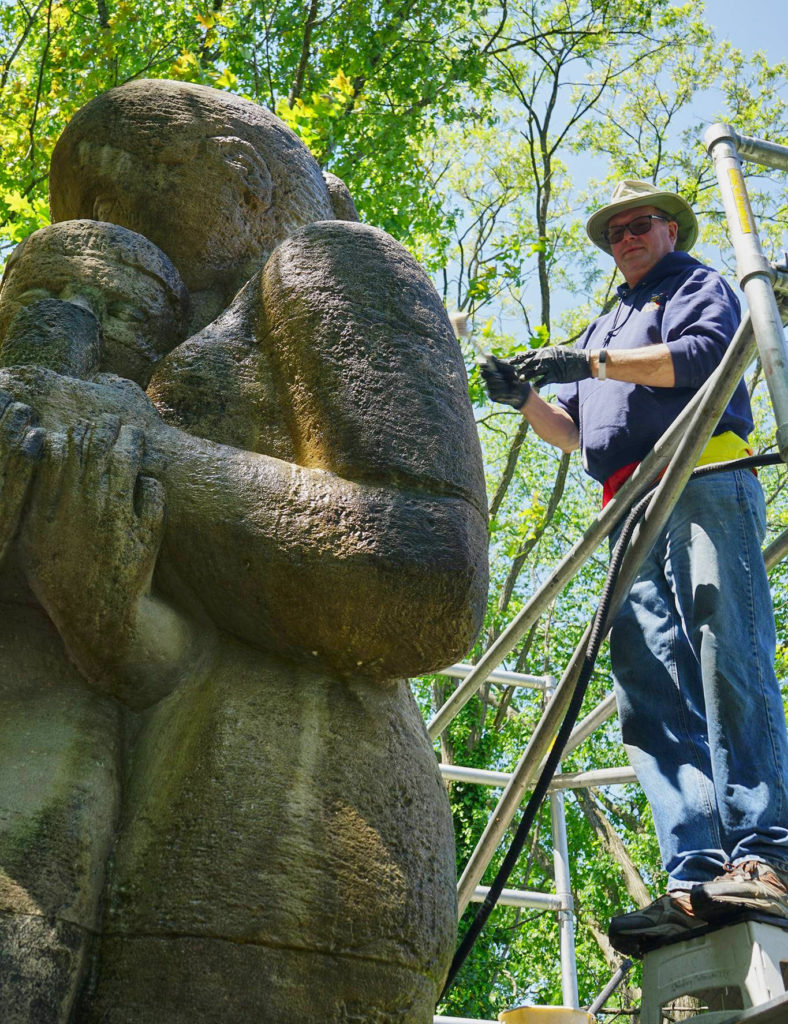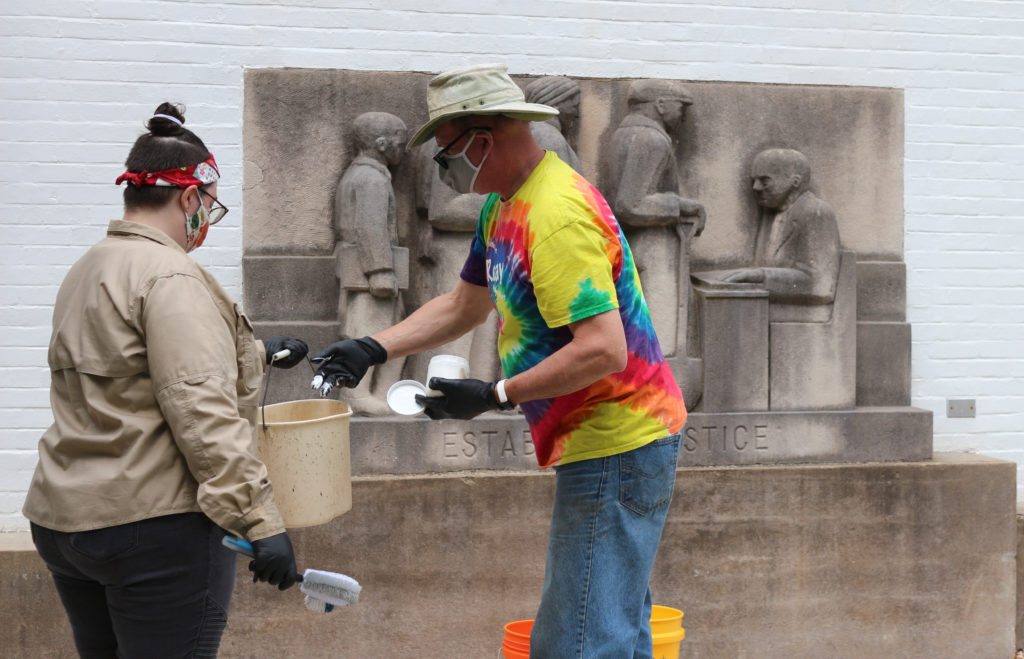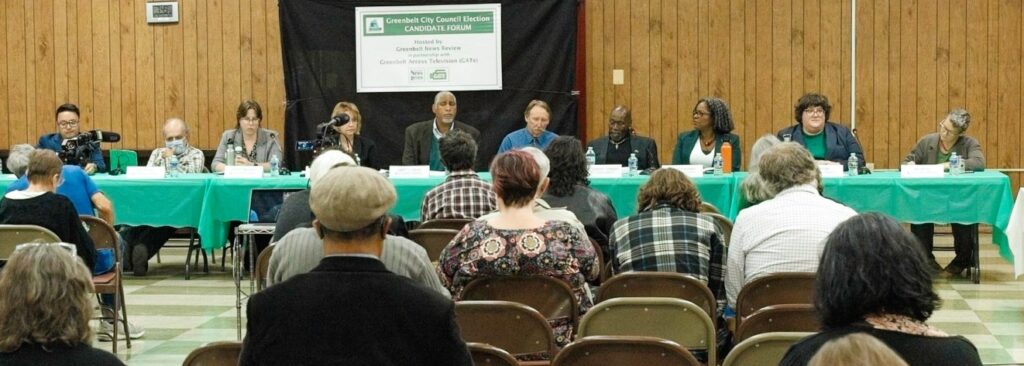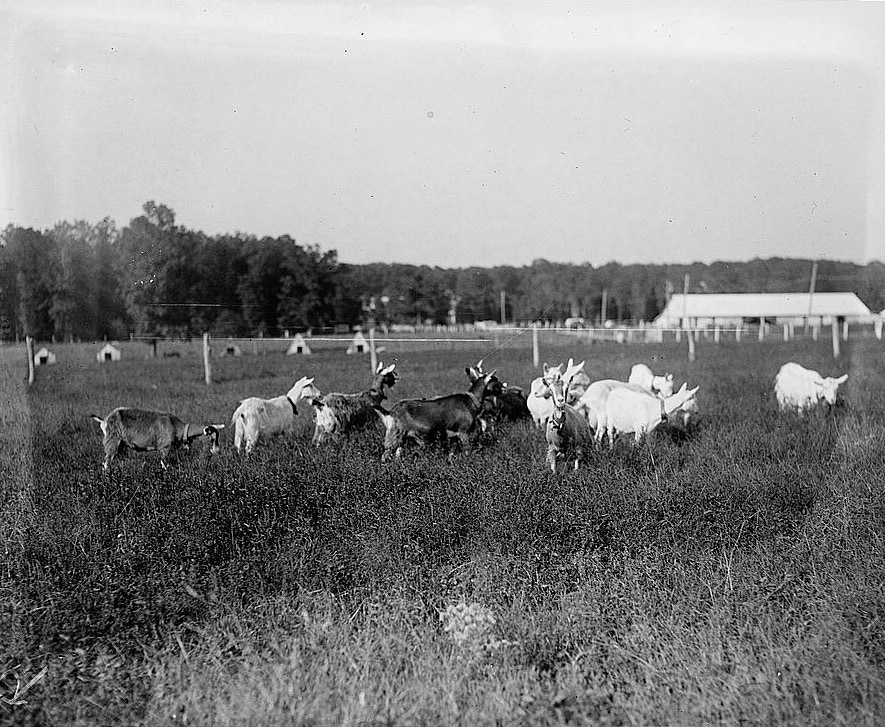Roosevelt Center’s Mother and Child statue got a special scrub-down last week as a team of three skilled art conservators arrived to clean and maintain Greenbelt’s beloved statue as well as the Community Center Preamble reliefs.
The first step was to apply a special detergent, sodium lauryl sulfate, an anionic and non-acidic surfactant which does not etch or sink into the stone to damage it later. The second step is to apply a biocide to kill lichens that sink their roots into the limestone. A second scrub with the detergent reveals if the statue is clean. The conservators were pleasantly surprised to find that the dirt was less tightly adhered than might be expected and the stone was not as prone to crumbling as they might have feared.
Though the team won their contract from the city nearly a year and a half ago, the conservation work was delayed by the pandemic and also by needed repairs to the Community Center windows. The team found the city staff cooperative and helpful and they enjoyed the beautiful trees and lovely
atmosphere of the Roosevelt Center space, which has been extensively renovated several times over the years.
The conservators emphasized that preventative maintenance is essential for the conservation of public artworks. Limestone is especially prone to erosion and must be taken care of. Conservator Mari Hagemeyer stated, “Maintenance projects are super important, and this is why we can have these things around for generations.”
The conservation team brought a wealth of specialized knowledge and practical experience to the task of cleaning these 80-plus-year-old limestone carvings. Howard Wellman works on objects for museums, archaeological projects and government agencies, including outdoor sculpture, monuments and historic cemeteries. Working alongside Wellman were Connie Stromberg and Hagemeyer. Stromberg has worked at sites including Frank Lloyd Wright’s Fallingwater, the Hirschhorn Museum and Sculpture Garden, the Smithsonian, the U.S. Capitol and more. She studied sculpture at Carnegie Mellon University and earned an M.S. in sculpture conservation from the Winterthur/University of Delaware program in the conservation of artistic and historic objects. Hagemeyer has a B.S. in materials science and engineering with a minor in French from the University of Maryland, and has worked with the U.S. Navy Underwater Archaeology Branch, Colonial Williamsburg Foundation, the Los Angeles County Museum of Art’s objects lab and the Walters Art Museum in Baltimore.
Lenore Thomas Straus (1909-1988) studied at the Chicago Art Institute, but was largely self-taught. She moved to the D.C. area in 1935 and began working for the Resettlement Administration and Works Progress Administration. In addition to the Preamble reliefs (1937) and Mother and Child (1939), Straus created terra cotta murals for post offices in Fredonia, Kan.; Covington, Va.; Leetonia, Ill.; and Webster Springs, W.Va. Straus sculpted a giant frog playground sculpture for Langston Terrace, the first federally funded housing project in Washington, D.C., around 1940. She also created works for the Alice Ferguson Farm in Accokeek, where she lived and worked in the early 1940s and where she married Robert Ware Straus. Straus spent the last 20 years of her life in Blue Hill, Maine, where several of her sculptures may be seen at the Morgan Bay Zendo and the Blue Hill Public Library.





